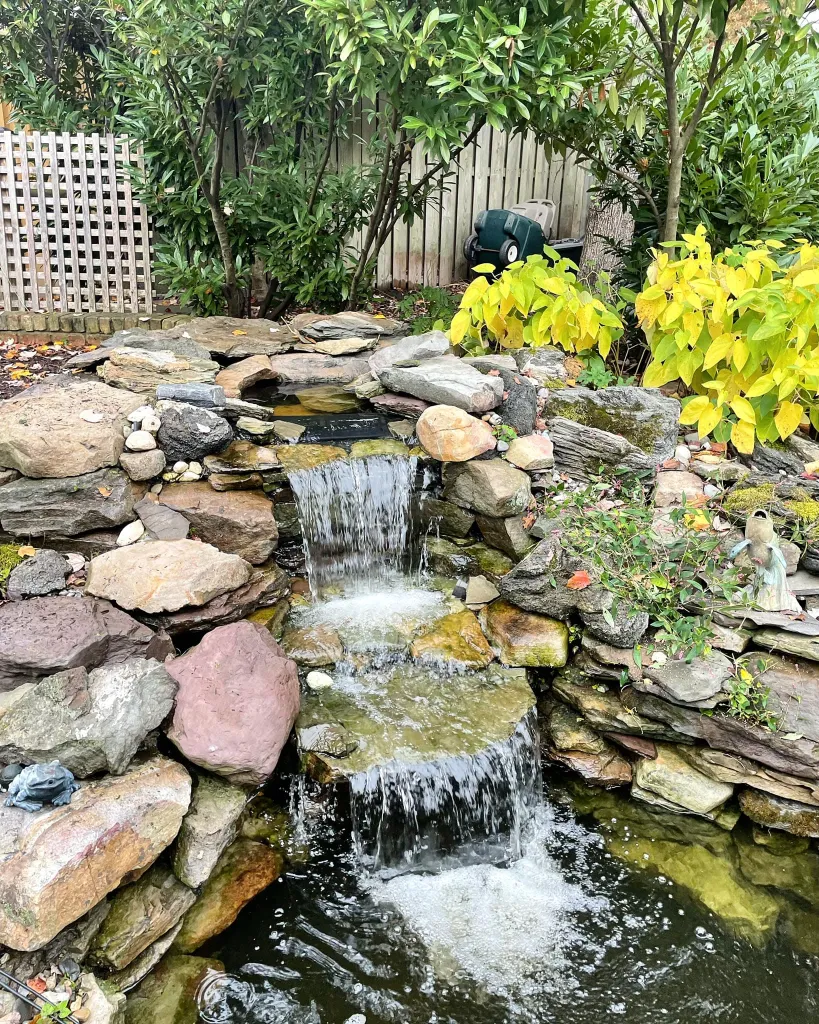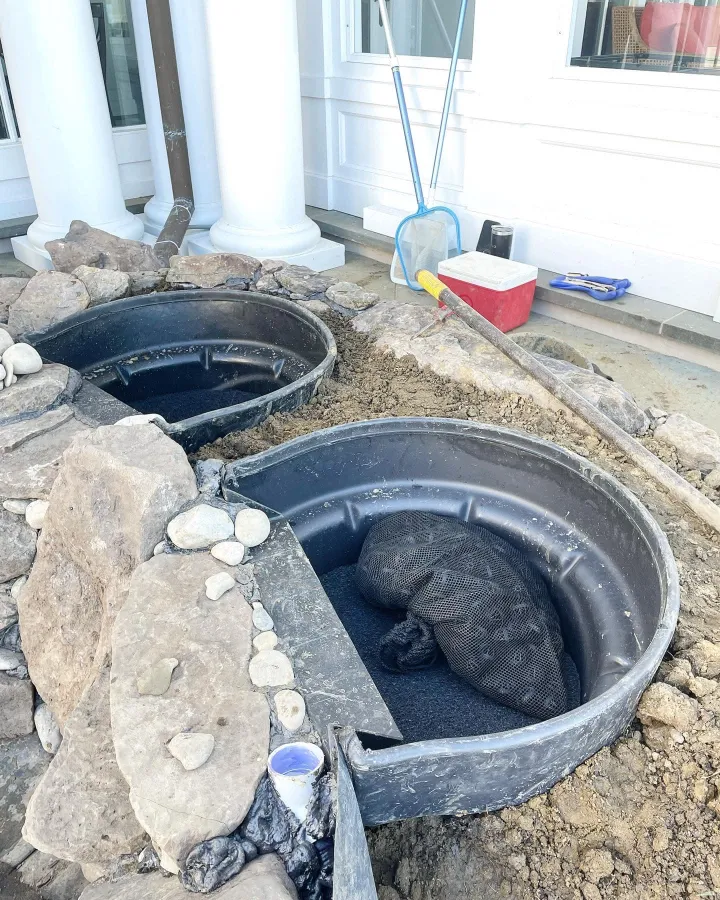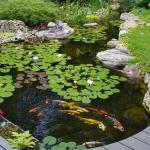Transforming your outdoor space into a tranquil oasis can be a rewarding and rejuvenating experience. One of the most captivating and serene features you can add to your garden is a pond with a cascading waterfall. Not only do ponds and waterfalls enhance the aesthetic appeal of your landscape, but they also attract wildlife and contribute to a calming ambiance. If you’re considering taking on a do-it-yourself (DIY) project to create your own ponds and waterfalls, this comprehensive guide will walk you through the process from start to finish.

Credit: www.youtube.com
Planning Your DIY Pond and Waterfall
Before you start digging or purchasing materials, it’s crucial to have a solid plan in place. Determine the location of your pond and waterfall, considering factors such as sunlight, existing landscaping, and proximity to utilities. Sketch out the layout and dimensions, considering the size of your yard and the visual impact you want to achieve.
Key Considerations:
- Location: Choose a spot that receives a balanced amount of sunlight and shade to support both the aquatic life and the surrounding plants.
- Size and Shape: Consider the available space and the visual impact you want to create. Irregular shapes often mimic natural ponds more effectively.
- Water Source: Determine the source of water for your pond, whether it’s a dedicated water line, rainwater collection, or a pre-existing natural water source.
- Materials: Research the types of materials you’ll need for the pond liner, pump, filter, rocks, and plants.
Excavating and Shaping the Pond
Once you have a solid plan in place, it’s time to start digging. Depending on the size and shape of your pond, this step may require significant effort. Consider renting excavation equipment if you’re dealing with a larger area, but for smaller ponds, a shovel and some elbow grease will do the trick. As you excavate, shape the pond basin to mimic natural contours, incorporating shallow and deep areas to support a variety of aquatic plants and creatures.
Step-by-step Excavation:
- Mark the outline: Use stakes and string to mark the outline of the pond and waterfall, ensuring you have a clear guide for the excavation process.
- Start digging: Begin excavating the pond basin, keeping the soil nearby for later use in landscaping the surrounding area.
- Shape the edges: Create gradual slopes and irregular edges to mimic a natural pond’s appearance. Incorporate deeper areas for fish and aquatic plants.
- Consider the waterfall: If including a waterfall, plan the elevation and design the watercourse within the excavation area.
Installing the Pond Liner and Waterfall Features
With the pond basin excavated and shaped, it’s time to install the pond liner and begin adding the waterfall features. The liner will provide a barrier to prevent water from seeping into the surrounding soil, maintaining the integrity of your pond. When it comes to the waterfall, you can opt for a pre-formed cascade or get creative with natural stone to create a unique and visually appealing water feature.
Steps For Liner Installation And Waterfall Features:
- Lay the pond liner: Carefully place the pond liner into the excavation, ensuring it extends beyond the edges to accommodate the rocks and landscaping around the pond.
- Create the waterfall structure: Whether using a pre-formed waterfall or natural stone, arrange the rocks and materials to create a visually appealing and functional waterfall feature.
- Connect the pump and filter: Install the necessary equipment to circulate and filter the water within the pond and waterfall, ensuring a healthy and balanced ecosystem.
- Test the water flow: Before adding rocks and plants, test the water flow to ensure the waterfall cascades as desired and the pump operates effectively.

Credit: premierpond.com
Landscaping and Planting Around the Pond
Once the pond liner is in place and the waterfall features are installed, it’s time to focus on the surrounding landscaping and planting. This step is where you can truly enhance the natural beauty of your DIY pond and waterfall, incorporating a variety of plants, rocks, and other elements to create a harmonious and inviting environment.
Enhancing Your Pond And Waterfall With Landscaping:
- Add rocks and boulders: Surround the pond and waterfall with carefully placed rocks and boulders to create a natural and visually appealing border.
- Choose aquatic plants: Select a variety of aquatic plants such as water lilies, lotus, and submerged grasses to introduce color and texture to the pond while providing habitat for wildlife.
- Incorporate marginal plants: Plant species like irises, cattails, and ferns around the pond’s edge to soften the transition between the water and the surrounding landscape.
- Consider lighting: Install low-voltage landscape lighting to illuminate the pond and waterfall at night, creating a captivating and enchanting atmosphere after dark.
Maintaining Your DIY Pond and Waterfall
Once your pond and waterfall are in place and the landscaping is complete, it’s essential to establish a regular maintenance routine to ensure the longevity and vitality of your aquatic ecosystem. Regular maintenance tasks will help keep the water clear, the plants thriving, and the wildlife flourishing.
Essential Maintenance Practices:
- Monitor water quality: Test the water regularly for pH, ammonia, and nitrate levels, and address any imbalances to maintain a healthy environment for fish and plants.
- Clean the pump and filter: Regularly remove debris and clean the pump and filter to ensure optimal water circulation and filtration.
- Trim and prune plants: Maintain the aquatic and marginal plants by trimming and pruning as needed, preventing overgrowth and maintaining a balanced ecosystem.
- Remove debris: Skim the surface of the water and remove any debris that may accumulate, keeping the pond clean and free of organic matter.
Enjoying the Fruits of Your Labor
After all the hard work and dedication you’ve put into creating your DIY pond and waterfall, it’s time to sit back, relax, and enjoy the tranquil beauty of your newfound oasis. Whether you’re lounging by the water’s edge, listening to the soothing sounds of the cascading waterfall, or observing the wildlife that’s been attracted to your garden, your DIY pond and waterfall will undoubtedly become a cherished focal point of your outdoor space.
Embarking on a DIY project to create your own ponds and waterfalls allows you to not only personalize your outdoor environment but also connect with nature in a meaningful and rewarding way. By following the steps outlined in this guide and infusing your creativity and vision, you’ll have the opportunity to craft a stunning aquatic sanctuary that enriches your life and the lives of those who experience it.
Remember, the journey of creating a DIY pond and waterfall is as enriching as the destination itself. So, embrace the process, savor each step, and revel in the fulfillment of bringing your dream of a serene and captivating water feature to life.




